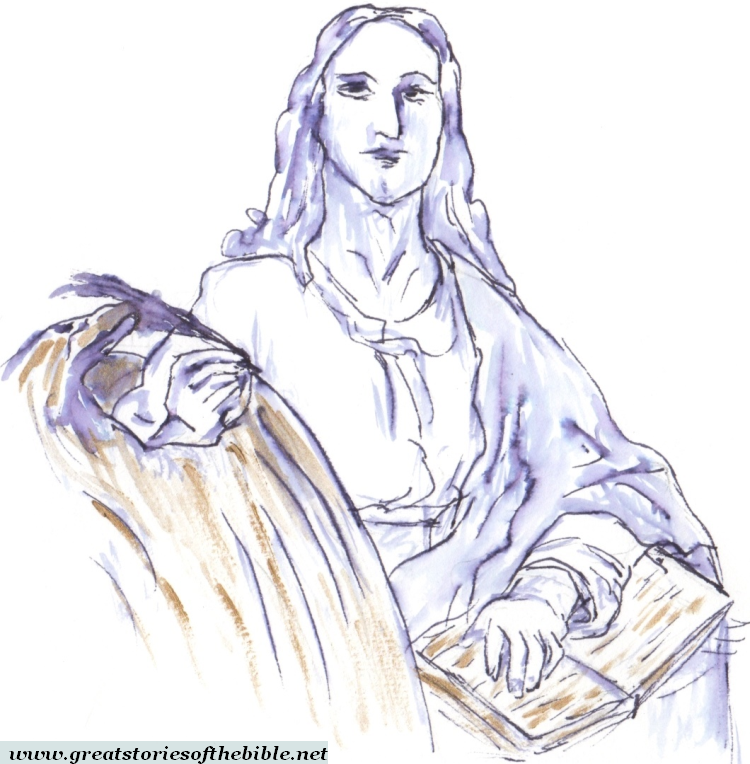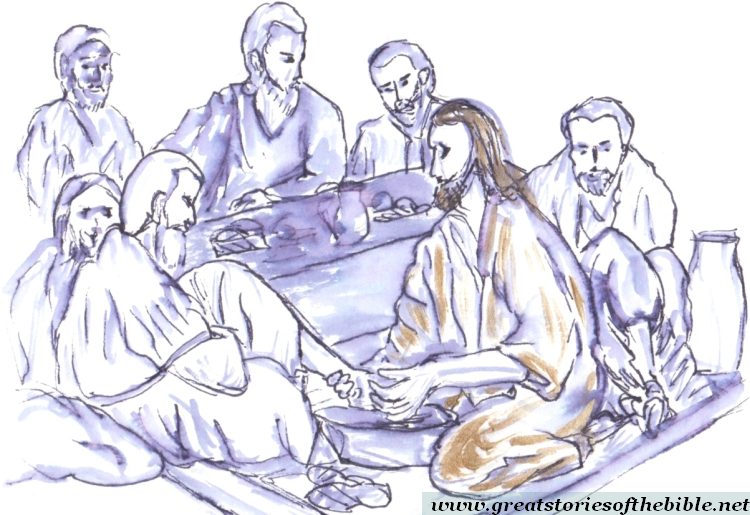Gospel of John
The good wine
The Tradition identifies the anonymous «disciple whom Jesus loved» (John 13,23; 19,26; 20,2; 21,7; 21,20), author of the gospel (see John 21,24; 19,35), with the Apostle John. He probably redacted his work in Ephesus, around the end of the I century AD: the gospel of John is the latest of the four. The gospel of Mark, due to its attention to Jesus disciples’ education, is addressed to persons who are training to become Christian; Matthew and Luke’s ones are for already formed Christian communities that run into the daily difficulties of practicing the Faith (like for example the mutual forgiveness: see Matt 18,15-18; the brotherly love: see Matt 25,31-46; the fair distribution of the wealth: see the last post on Luke). The gospel of John, instead, is for Christians who want to take their Faith to a deeper level: «Therefore Jesus did many other signs in the presence of his disciples, which are not written in this book; but these are written, that you may believe [continue to believe] that Jesus is the Christ, the Son of God, and that believing you may have life in his name» (John 20,30-31). This way we can explain the many differences between John and the first three gospels (they are “synoptic” exactly because they have a lot of common parts that we can compare in “one view”): he writes later, to recipients who already know well Jesus’ story.
The fourth evangelist’s symbol is the eagle: John, in fact, raises his acute spiritual sight to explore the mystery of Jesus’ divinity. 
The technique he uses to accompany the reader in this journey in the depths of the Faith is symbolism: John’s text has a multi-level interpretation, connecting the historical facts with a spiritual meaning. To help the reader in passing from one level to another, he employs some peculiar procedures: the misunderstanding (the characters often comprehend Jesus’ words in the wrong level, like Nicodemus who thinks about a rebirth at old age and not about the regeneration of Baptism: John 3,4); the double meaning (Jesus tells He will be «lifted up»: John 12,32-33; it literally happens when He is nailed to the cross, but this is the moment in which He manifests the glory of His unlimited love); the irony as the figure of speech that expresses the difference between what someone says and what he/she means (it can be accidental, like in John 11,49-50: Caiaphas the high priest wants to kill Jesus to save the nation from the Roman vengeance, but he is unknowingly prophesying that the gift of His life will bring salvation to the people). The use of symbols does not invalidate the truth of the text’s literal meaning, they only add another level of interpretation (realistic symbolism). Some scholars, in fact, underline that John is more accurate than the synoptic gospels in quoting topographic particulars of Jerusalem (see John 5,1-2; 8,20; 9,7; 18,1; 19,13); about the three year duration of Jesus’ mission instead of only one (the evangelist cites three Passover feasts: John 2,13; 6,4; 11,55); about the Passion’s chronology (in the synoptic gospels Jesus’ last supper takes place in the context of the Hebrew Passover supper and He would be crucified in the day of the feast, while in John Jesus is crucified the day before the Hebrew Passover, when the lambs needed for the celebration are sacrificed in the Temple); about some details regarding the Romans’ involvement in the Passion (they arrest Jesus together with the Jews: John 18,3.12; only the Roman authority can condemn to death: John 18,31; the soldiers part the Crucified’s garments: John 19,23-24; they break the legs to the two criminals crucified near Jesus to make them die before sunset: John 19,32; one of them pierces Jesus’ body: John 19,34).
The gospel of John is introduced by a prologue that present its main themes (John 1,1-18): the Word who incarnates in Jesus is God’s Word and exists with God eternally, with God He participates in the creation, He is the life and the light of mankind, He was rejected by His people, He gives «the right to become God’s children» to those who receive Him, He is the one who reveals God the Father. Then follow two main parts, ended by the epilogue in chapter 21: the Book of the Signs (John calls this way seven Jesus’ miraculous deeds, to point out one more time that we have to find in them a deeper level of meaning: John 1,19-12,50) and the Book of the Hour (the fulfillment of Jesus’ mission is in the paschal mystery, that John invites us to read as His “glorification”: John 13,1-20,31). I present to you the passage of the first of Jesus’ signs, that was carried out in the wedding of Cana (John 2,1-11).
«And the third day there was a wedding in Cana of Galilee, and the mother of Jesus was there. Now Jesus also was invited, with his disciples, to the wedding». The text literally tells us that Jesus, His mother and His disciples participate to «a wedding». Let us go deeper to understand the spiritual meaning John wanted to communicate writing about this event (I remind you that the spiritual meaning does not exclude the literal one: the first completes the second; Jesus plausibly participated to a wedding with His mother and his disciples). The mention of «on the third day» invites us to think, in the Old Testament’s language, that God will reveal Himself (see e.g. Exod 19,11.16); the wedding is indeed the symbol of the Covenant between God and His people (see e.g. Prophet Ezekiel, Prophet Hosea and the Song of Solomon). The name «Cana» sounds similar to the Hebrew verb “to establish” (qānah) and the Galilee is a border region in which different ethnic groups meet (even not belonging to the Hebrew people); «the mother» represents Jesus’ roots in the Elected people and the Old Covenant. In only two verses we can guess the developing of the situation: we expect a revelation by God, about the establishment of a Covenant that will involve both the Hebrew people and the Gentiles.
«When the wine ran out, Jesus’ mother said to him, “They have no wine.” Jesus said to her, “Woman, what does that have to do with you and me? My hour has not yet come.” His mother said to the servants, “Whatever he says to you, do it.”». Jesus calls His mother «woman» she pronounces a sentence that reminds us of the Hebrew people’s reception of the Sinaitic Covenant («All that the LORD has spoken we will do»: Exod 19,8): she represents the Israel that is faithful to God (the “bride”) who discloses to her Lord (Jesus) the situation of a dead wedding/covenant, lacking love and joy (the «wine»: see e.g Song 1,2.4 and Sir 31,27). Jesus’ Hour is the moment of His Passion (when we find again the mother and one of His disciples: John 19,25-26): the sign that John tells is like moving up that moment and making it present in the situation.
«Now there were six water pots of stone set there after the Jewish manner of purifying, containing two or three metretes apiece. Jesus said to them, “Fill the water pots with water.” They filled them up to the brim. He said to them, “Now draw some out, and take it to the ruler of the feast.” So they took it. When the ruler of the feast tasted the water now become wine, and did not know where it came from (but the servants who had drawn the water knew), the ruler of the feast called the bridegroom, and said to him, “Everyone serves the good wine first, and when the guests have drunk freely, then that which is worse. You have kept the good wine until now!” This beginning of his signs Jesus did in Cana of Galilee, and revealed his glory; and his disciples believed in him». The number «six» indicates in the Hebrew culture something not complete, the «stone» reminds us the material on which God wrote the commandments of the Old Covenant and the hardened heart of the people who could not abide by it. The water containers are not movable (they hold about 100 liters/26 gallons each), they are probably dug into the stone of the floor and they are not used for drinking but for «the Jewish manner of purifying» (see Mark 7,3-4). These clarifications make Jesus’ two commands very strange: why filling one more time the containers (with many strenuous trips to the well) if «the guests» are already at the table? Why taking to drink «to the ruler of the feast» some water that is only for the rites of purification? Nevertheless, the servants obey the orders. The «ruler of the feast» (he represents the Hebrew ruling class that does not recognize that Jesus comes from the Father; «We know that God has spoken to Moses. But as for this man, we do not know where he comes from»: John 9,29) tastes «the good wine» (the symbol of the New Covenant that Jesus brings: to John’s Christian readers a recognizable reference to the Eucharistic wine) congratulates «the bridegroom». If the woman/bride representing the faithful Israel is Jesus’ mother, here the bridegroom is He who provides the wine/New Covenant: Jesus Himself. This is the “prototype” of Jesus’ signs, not only the first of sequence, but even qualitatively, as the Greek word “arché” suggests in the original text: here we have the whole gospel. Jesus, in fact, brings again love and life in the relationship between mankind and God with the New Covenant in His blood (see the references to the “Hour”), manifesting Himself as powerful Lord, sent by the Father; the disciples participate to that new life believing in Him, through Faith (see John 20,30-31). The New Covenant is «not for the [Hebrew] nation only, but that he might also gather together into one the children of God who are scattered abroad» (see John 11,52; see the Galilean setting of the wedding).
The site that gave me most of the clues for the present post is: www.symbolon.net (in Italian).
In the next one we will begin to read the Acts of the Apostles.